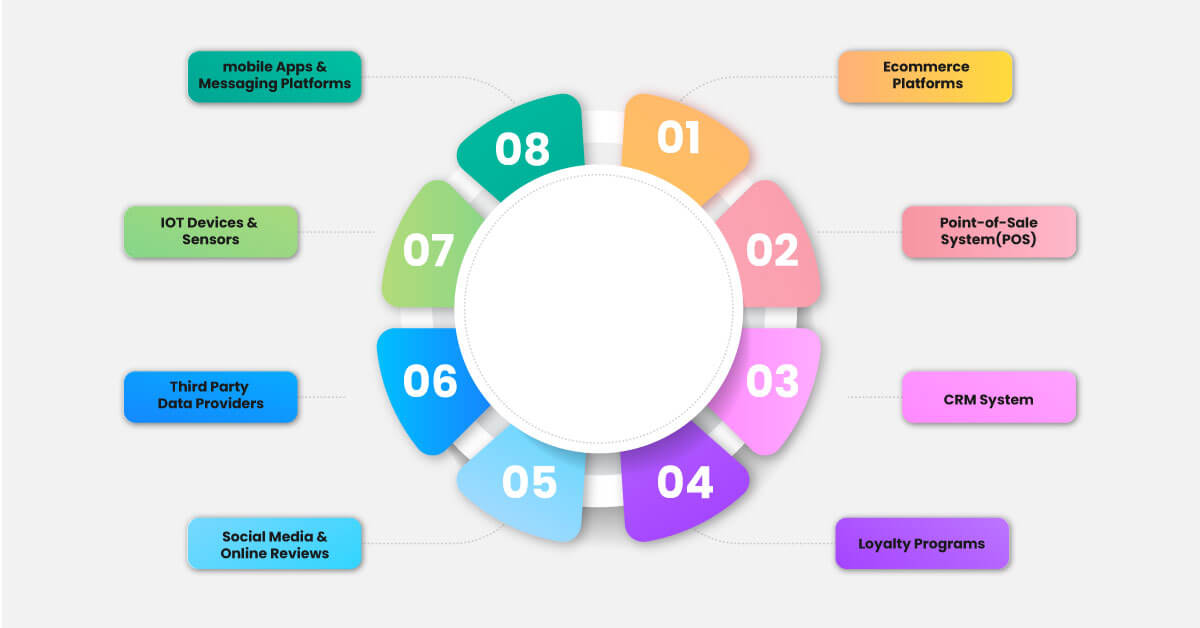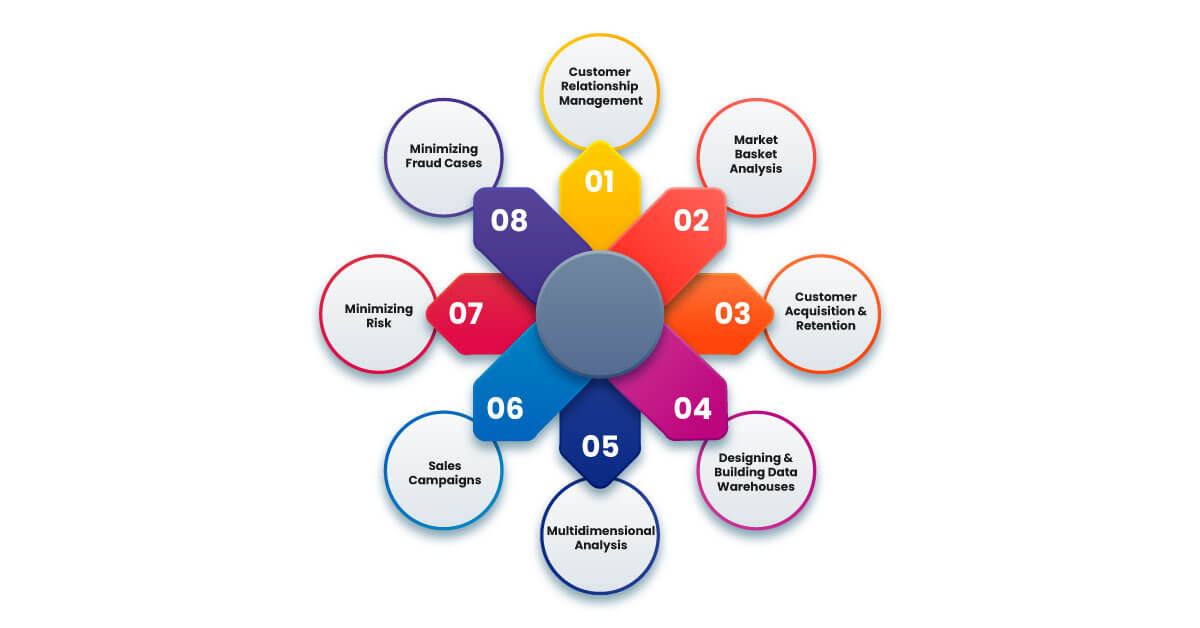How Does Digital Commerce Data Mining help in the Retail Industry?

Shopping is rarely straightforward, primarily considering online shopping. Customers frequently compare product pages and leave or remove items from their carts. However, by digging into the data, stores can learn a lot about what customers like, how they shop, and what they end up buying. With this info, shops can figure out the most innovative ways to attract new customers, keep the ones they have, and remind them about stuff they might want to buy later. The retail industry is realizing a competitive advantage by utilizing data mining. Retailers have been collecting enormous amounts of data throughout the years, just like the banking industry, and now have the tools needed to sort through this data and find useful pieces of information. Retail data mining may help businesses make proactive decisions by providing information on product sales patterns. It also includes customer buying habits and preferences, supplier lead times and delivery performance, seasonal changes, consumer peak traffic hours, and other predictive data.
What do you Mean by Digital Commerce Data Mining?
Data acquisition (also called data mining) is the process of gathering data. Data mining involves using advanced tools for data analysis to uncover hidden patterns and relationships within large datasets of e-commerce. These advanced tools include various statistical models, Artificial intelligence, mathematical algorithms, and machine learning approaches like neural networks, which learn from experience to improve their performance automatically. Therefore, digital commerce data mining goes beyond extracting and managing large amounts of data. it also involves e-commerce data analysis with effective prediction. Imagine you run an online store selling various products.
The digital commerce which is also known as e-commerce that describes the selling and buying of products and services over mobile networks or other digital technologies. It includes a wide range of online purchases, from buying digital things like ebooks or software subscriptions to buying physical commodities like gadgets or clothes. Digital commerce data scraping has transformed the way businesses operate and consumers shop. It offers convenience, flexibility, and often a broader selection of products or services compared to traditional brick-and-mortar stores.
How does Data Mining Work in the Retail Sector?
Data mining retail is for more than just data scientists. Sure, they're experts in the field, but nowadays, even business analysts, executives, and other workers who are comfortable with data can dive into it.
At its core, data mining and digital commerce Scraping Services involve using tools like machine learning and statistical analysis to scrape high-quality e-commerce data. These days, with the help of AI, the process has become more automated and efficient, especially when dealing with huge datasets like customer records or weblogs.
Now, let's understand the process into four main stages to evaluate the data mining activities more efficiently:
Data gathering
This is where we collect all the relevant data we need for analysis by leveraging digital commerce scraping services. It could be from different sources like databases, warehouses, or even external sources. Once collected, data often ends up in a data lake, a central storage space.
Data preparation
In this step of digital commerce data mining retail industry, we get the data that can be easily used for mining. Experts explore this data, perform cleaning and processing by fixing errors and removing duplicates, and transform it to make it consistent for analysis.
Data mining
With the data processed, we select the proper technique and algorithms to start mining. These algorithms dig through the data, looking for patterns, relationships, and correlations. Sometimes, they need training on sample data first before running on the complete set.
Data analysis and interpretation
Finally, we analyze the mining results to create models that provide informed decision-making processes. It's not just about crunching numbers; it's about making sense of what the data tells us. Visualizations and storytelling techniques help communicate these findings effectively to business stakeholders.
Data Sources for Retail Industry

In the digital era, retail businesses have access to various data from various sources, each offering unique insights to drive their operations and decision-making. Let's take a closer look at the key data sources that retailers can tap into to gain a competitive edge:
E-commerce Platforms
When retailers have their own online stores and websites, they get lots of info on how customers browse, what they put in their carts, and what they buy. This helps them know what customers like, how they buy stuff, and if their online ads are working.
Point-of-Sale (POS) Systems:
POS systems are crucial for physical stores and digital e-commerce data mining helps in collecting required data for effective analysis. They track what's selling, what's in stock, and how customers pay. This information helps stores manage stock, predict sales, and understand customers' purchases.
Customer Relationship Management (CRM) Systems
CRMs store a lot of customer information, like names, what customers buy, and how they interact. Stores use this to group customers, create personalized ads, and make customers feel valued.
Loyalty Programs
Through loyalty programs, stores can gather a lot of information about customers, like what they buy often and what they like. This helps stores make special offers and make customers happy which helps in enhancing retention ratios.
Social Media and Online Reviews
Keeping an eye on social media and online reviews helps stores to know what customers think about them and what's trending in the market. This helps stores to plan marketing campaigns and make better products.
Third-Party Data Providers
Stores can get extra data from outside sources, like what kind of people live in an area or what's popular in the market by utilizing data mining and digital commerce scraping services. This helps them understand their competition better and expand the market segment.
IoT Devices and Sensors
Using smart devices in stores gives real-time information on how many people come in, how long they stay, and what they touch. This helps stores improve their layout and manage their stock well.
Mobile Apps and Messaging Platforms
Retailer apps and messaging are great for learning about customers, like where they are and what they like. This helps stores send ads that customers are more likely to click on and give them a better shopping experience.
Data File Formats
Data comes in various file formats, when leveraging commerce data scraping, depending on type of type. Being able to open and convert between these formats expands our access to valuable data. Here are some examples of file formats:
Tabular Formats
Tabular formats include data forms Such as .csv, .tsv, and .xlsx, which organize data into rows and columns to analyze data easily.
Non-tabular Formats
Using smart devices in stores gives real-time information on how many people come in, how long they stay, and what they touch. This helps stores improve their layout and manage their stock well.
Image Formats
Using smart devices in stores gives real-time information on how many people come in, how long they stay, and what they touch. This helps stores improve their layout and manage their stock well.
Agnostic Formats
The data formats like .dat, which can be used for various types of data by performing digital commerce Data Scraping.
Some file formats are proprietary, meaning they can only be opened by specific software from a particular company. Opening these files in other programs often requires converting them to a universal format due to differences in character encoding. Examples of proprietary formats include Excel or MS Access files designed for Microsoft Office applications.
It's considered best practice to store data in a format that's easily accessible for everyone. This typically involves using non-proprietary formats with standard character encodings like utf-8 and keeping files uncompressed if possible. If conversion between formats is needed, there are various methods, including online tools, available to facilitate the process.
Application of Data Mining in the Retail Industry

Data mining and digital commerce scraping services helps in analyzing customer purchase history could help you tailor your marketing efforts or expand your product offerings to meet customer needs better. There are various applications of data mining in retail.
Customer Relationship Management
CRM is about keeping customers happy, understanding their needs, and ensuring they stick around. By focusing on your customers, your business can grow and stay ahead of the competition. CRM means knowing your customers and making them feel valued. It is about using data to understand what they want and need. To make CRM work, a company needs to gather data about its customers with digital commerce data scraping to stay updated and make sure its users know how to use it to make better products and services.
Market Basket Analysis
Market basket analysis helps businesses understand which products go well together. For example, it might show that customers who buy diapers also tend to buy beer. But it's not just about diapers and beer. Market basket analysis can uncover all sorts of unexpected connections between products, which retailers can use in various ways. Retailers use this analysis with digital commerce scraping services of iWeb Scraping to decide how to arrange products in their stores, create special deals, or design their online stores.
Customer Acquisition and Retention
Digital commerce data mining helps businesses attract and keep customers in the competitive retail world. By understanding customers' shopping habits, retailers can offer them the right deals and incentives. Data mining can also help businesses understand why customers leave and how to prevent others from doing the same.
Designing and Building Data Warehouses
Retail data covers a lot of ground, from sales to staff to products. Building a data warehouse involves deciding what data to include and how detailed it should be. The results of data mining can guide the design of a data warehouse, helping retailers make decisions about what information to include and how to organize it.
Multidimensional Analysis
In retail, up-to-date information about everything from customer preferences to product sales is essential. Tools for multidimensional analysis help retailers make sense of this data. Creating complex data cubes that fit the needs of data analysis is crucial for understanding trends, prices, and customer satisfaction.
Sales Campaigns
Retailers use various tactics, such as advertising, vouchers, discounts, and special offers, to boost sales and attract customers. Analyzing the effectiveness of these sales campaigns can help businesses increase their profits. One way to measure campaign success is by comparing sales and transactions during the campaign to those before or after. Multidimensional analysis can help with this. Also, association analysis can show which products are often bought together, especially during a sale.
Minimizing Risk
Data mining helps retailers manage risks by understanding market trends and customer behavior. By studying past purchases, retailers can see how loyal customers are and adjust their strategies to stay competitive and reduce losses. Retailers can use data mining to target customers who are likely to buy from them and decide when and where to advertise.
Minimizing Fraud Cases
Preventing fraud is crucial for retailers. Data mining can help identify suspicious activity, especially at the point of sale. Some retailers use CCTV cameras and data mining to catch dishonest employees. This helps managers gather evidence and take action without being physically present in the store.
Conclusion
The expertise of iWeb Scraping of website data scraping and data mining represents a strategic imperative for retail businesses seeking to future-proof their operations and cement their position as industry leaders. The path forward demands a steadfast commitment to data-driven innovation, a keen eye for ethical considerations, and an unwavering focus on delivering exceptional customer experiences. As we move forward, it is clear that the retailers who embrace a data-driven culture and integrate data acquisition and mining into the core of their operations will be well-positioned to thrive in the digital commerce arena. By harnessing the insights gathered from their data assets with expert commerce scraping services, retailers can adapt to changing market dynamics, deliver personalized experiences, and drive sustainable growth in the face of fierce competition.




